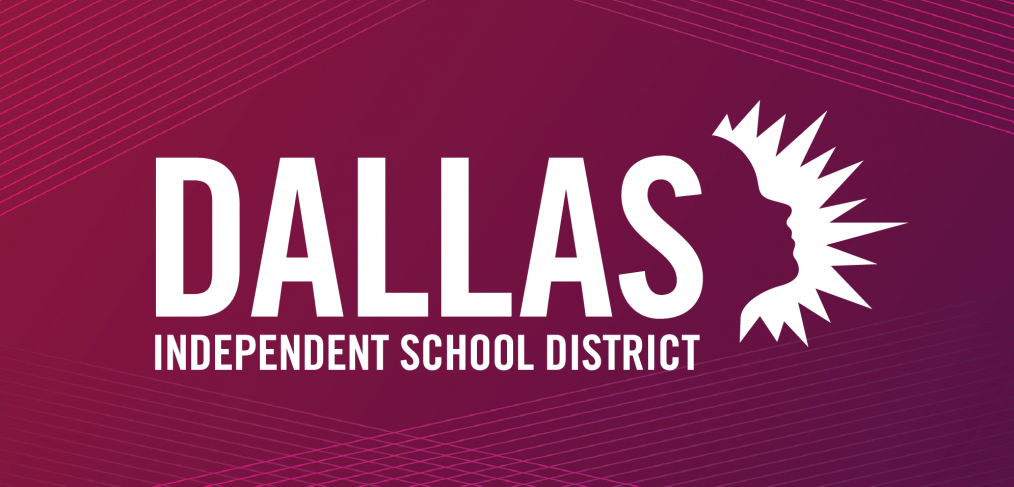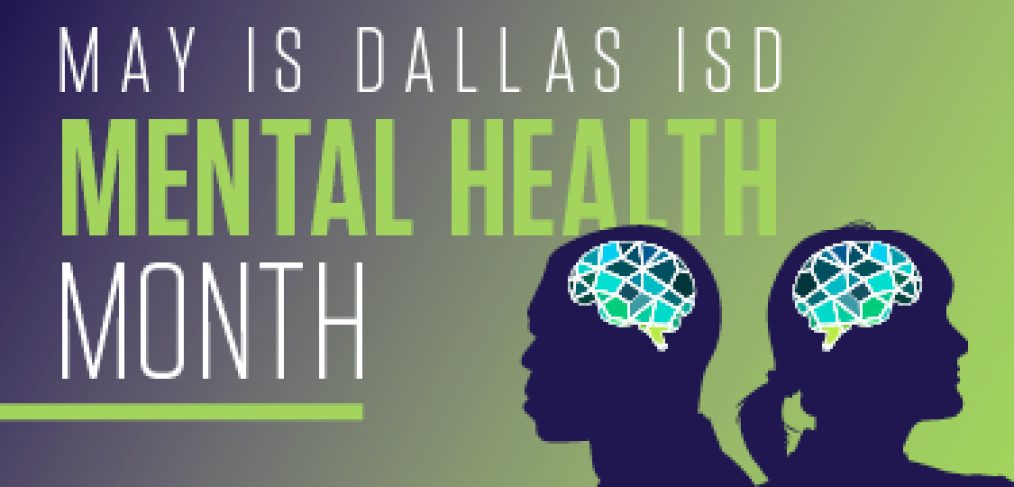School librarians are the epitome of making memorable moments and striving for the yes when it comes to accelerating learning, and Dallas ISD has been celebrating their work with students at all levels during April—School Library Month.
Even before the COVID-19 pandemic, library media specialists around the district were providing critical support to students and staff by promoting reading fluency, creating safe places for students and planning enrichment events to accelerate learning. Then the pandemic began, and they went above and beyond to help their communities overcome challenges no one could have imagined before.
“Librarians are helping people. They want to help, they want to serve,” said Gay White Patrick, the director of Library & Media Services. “That’s one thing that librarians are really good at—coming up with ways to engage the child more effectively in education.”
Librarians work on targeting the areas where students need the most support. Whether they work at elementary, middle or high schools, they are transforming student lives every day. The following stories explore just a few of the ways school librarians have positively affected Dallas ISD.
Marcie Verastiqui—L.L. Hotchkiss Elementary School

Marcie Verastiqui has spent four years concentrating on her community at Hotchkiss Elementary. Prior to her current role, she served as a bilingual teacher, so she understands how important access is to academic success.
“We’re one of the few employees in the school who actually get to teach all the students, from the lowest grade to the highest grade,” she said. “We also have a vast amount of knowledge. I always say I don’t know everything, but I can find everything for you.”
During her first year at Hotchkiss, she received an opportunity to do just that. A third-grader entered her library who had recently arrived in Dallas and spoke a French dialect. While the student could read in French, she could not use any of the English language books yet, so Verastiqui made it her mission to contact schools around the district to acquire French language books.
“When I brought them to her, her eyes were just wide open, like, ‘Oh my gosh, I can read this, I know what this is,’” Verastiqui said. “They were very simple books because they came mostly from high school libraries where they were taking beginner French, but she was so appreciative. Cut to now, and she’s pretty much fluent in English and French. She’s amazing.”
Moments like that have made Verastiqui’s time as a school librarian so fulfilling, she said.
Lea Birmingham—T.W. Browne Middle School
This may be Lea Birmingham’s first year at Dallas ISD, but she is no stranger to the power of school libraries after previously serving as a library media specialist in Fort Worth ISD for 11 years. In her eyes, one of her most important roles at T.W. Browne Middle School is creating specialized learning materials and lesson plans to explore the subjects that teachers want to share, but do not have the time or bandwidth to cover.
Sometimes, this looks like organizing spelling bees or science and history fairs; other times, it looks like bringing in a sign language interpreter to demonstrate the importance of diversity and inclusion. Recently, Birmingham asked an ASL interpreter to teach a choir class Tevin Campbell’s “Can We Talk?” She was worried that the students would not have enough time to learn the material, but they were signing the lyrics and their names by the end of the class period. They also discussed what it would feel like to be unable to communicate with their peers and examined why other languages are important. Even better, those lessons stayed with them beyond that school day. 
“A couple days later, I saw one of the students in the hall, and we signed to each other,” Birmingham said. “So I knew they didn’t just get it that day. They clearly still understand it, and they’re still practicing it. That was one of my proudest moments.”
For Birmingham, being a school librarian is all about providing opportunities for academic and social and emotional growth and exploration.
“We are the in-person Googles. We find the resources. We are also the wonderland for students—we help fuel that imagination,” she said. “Reading will take you places that you may not ever be able to go in real life. Reading is a mirror to not only your soul, but to the soul of others. Reading opens up the doors to other cultures, other places, other ideas.”
The message she has for the Dallas ISD community is that school librarians do so much more than checking books in and out. They are “instructional supports” and “information centers,” and they guide students and teachers alike to the resources they need to succeed.
“When I walk in, I don’t see books, I see information,” Birmingham said. “I see ideas, and I see adventures. And I don’t think just anyone can come in there and make children see that. I have to get up and ask students, ‘What’s your favorite thing?’”
Then, of course, she helps them find it between the library stacks and the online databases.
Nina Canales—Hillcrest High School
Nina Canales taught elementary school students for 16 years before making her transition to school libraries. Her ultimate goal ever since has been to turn her library into a welcoming, safe space for students to catch their breath and get their work done.
 “It’s just this hub for them to come to, and they’re never turned away,” she said. “They come in and it’s, ‘How can I help you?’ right away, and they’re just so appreciative of that.”
“It’s just this hub for them to come to, and they’re never turned away,” she said. “They come in and it’s, ‘How can I help you?’ right away, and they’re just so appreciative of that.”
When the pandemic began and Dallas ISD went virtual, Canales found her own way to provide for her community. She was new to Hillcrest at the time, so while she set up a website with resources and made sure students and staff had access to ebooks like so many other librarians, she wanted to take her efforts a step further. So she turned to social media. She first tried her hand at YouTube tutorials, and then she took on Instagram and TikTok.
Once she got started, she realized she had stumbled upon something great. Last year, she even won the Texas Association of School Librarians’ MVP—Most Virtual Presence—award for her informative, fun and personally relatable content that allows her students to connect with her and library resources.
“They know everything about my dogs and my cats, but at the same time, they know I’m going to be doing book talks, and I’m going to be talking about the new things we have in the library,” Canales said. “They’re going through so much stress right now that no other teenager has gone through, so I tell them you need to find joy in things that make you happy.”
Canales is a good role model when it comes to finding joy and focusing on the positive. Her advice for her students is simple, and she lives out the message every day: “You be you, and you put yourself out there. You’re going to learn so many new things.”
All in a day’s work for this library media specialist.
School Library Month is dedicated to recognizing the role librarians play in supporting their communities and transforming student lives, and Dallas ISD is grateful for each and every one of them.
“It’s not about students accomplishing something for us; it’s about what we accomplish for them,” Patrick said.
Remember to thank the school librarians near you this month and beyond. You can also visit https://sites.google.com/dallasisd.org/librarian-achievements/home to nominate a librarian for going above and beyond for Dallas ISD.



 Tamika Alford-Stephens joins Dallas ISD as the new chief financial officer, reporting to Deputy Superintendent Dwayne Thompson. Prior to coming to Dallas, Alford-Stephens had been chief business and operations officer for Aldine Independent School District, where she oversaw district resources to drive improvements in processes and practices that promoted organizational efficiency and optimized student-learning experiences and saved the district $5 million through operational efficiencies. She began her 21-year career in education as a third-grade teacher at Aldine ISD. At Aldine ISD, she oversaw federal programs, grant accounting, and finances before being named chief financial officer in 2017 followed by becoming chief business and operations officer. She has a bachelor’s degree from Dillard University, a master’s degree in education administration from Prairie View A&M University, a master’s degree in business administration from the University of St. Thomas and a doctorate in educational leadership from Sam Houston State University.
Tamika Alford-Stephens joins Dallas ISD as the new chief financial officer, reporting to Deputy Superintendent Dwayne Thompson. Prior to coming to Dallas, Alford-Stephens had been chief business and operations officer for Aldine Independent School District, where she oversaw district resources to drive improvements in processes and practices that promoted organizational efficiency and optimized student-learning experiences and saved the district $5 million through operational efficiencies. She began her 21-year career in education as a third-grade teacher at Aldine ISD. At Aldine ISD, she oversaw federal programs, grant accounting, and finances before being named chief financial officer in 2017 followed by becoming chief business and operations officer. She has a bachelor’s degree from Dillard University, a master’s degree in education administration from Prairie View A&M University, a master’s degree in business administration from the University of St. Thomas and a doctorate in educational leadership from Sam Houston State University. Deputy Chief of IT Laurie Vondersaar has been appointed as acting chief of Technology to replace Jack Kelanic, who has been hired as the chief technology officer for the Los Angeles Unified School District. Vondersaar has been with the district since June. Prior to coming to Dallas, she was assistant superintendent of Strategic Initiative and Communication for Lovejoy ISD. In her 21 years of experience, she has also held the position of chief technology officer at various districts. She holds a bachelor’s degree in interdisciplinary studies and a master’s degree in computer education and cognitive systems from the University of North Texas and a doctorate in educational administration from Concordia University.
Deputy Chief of IT Laurie Vondersaar has been appointed as acting chief of Technology to replace Jack Kelanic, who has been hired as the chief technology officer for the Los Angeles Unified School District. Vondersaar has been with the district since June. Prior to coming to Dallas, she was assistant superintendent of Strategic Initiative and Communication for Lovejoy ISD. In her 21 years of experience, she has also held the position of chief technology officer at various districts. She holds a bachelor’s degree in interdisciplinary studies and a master’s degree in computer education and cognitive systems from the University of North Texas and a doctorate in educational administration from Concordia University.
 loves about maintenance services culture.
loves about maintenance services culture. 



 getting started with monthly sessions at the center in Lake Austin. While there, the district’s leadership team are working on developing skills to empower others and contemplate the definition of leadership, the vision of an effective classroom and the portrait of a successful graduate.
getting started with monthly sessions at the center in Lake Austin. While there, the district’s leadership team are working on developing skills to empower others and contemplate the definition of leadership, the vision of an effective classroom and the portrait of a successful graduate.

 Antonio Verduzco is completing his fourth year as Principal at B.H. Macon Elementary School and his 18th year in Dallas ISD. He began his career as a bilingual teacher at Margaret B. Henderson Elementary in 2001. Honored as a Reading Academy Laureate in 2003 and after obtaining his Master of Bilingual Education from Southern Methodist University in 2004, he was recognized as a Campus Teacher of the Year in 2006. Following his participation in the Urban Collaborative for Educational Leadership (UCEL) from 2006-2007 at the University of Texas at Arlington, he served as assistant principal at Fred F. Florence Middle School and Kleberg Elementary School. In August of 2009, he was Julius Dorsey Elementary School principal.
Antonio Verduzco is completing his fourth year as Principal at B.H. Macon Elementary School and his 18th year in Dallas ISD. He began his career as a bilingual teacher at Margaret B. Henderson Elementary in 2001. Honored as a Reading Academy Laureate in 2003 and after obtaining his Master of Bilingual Education from Southern Methodist University in 2004, he was recognized as a Campus Teacher of the Year in 2006. Following his participation in the Urban Collaborative for Educational Leadership (UCEL) from 2006-2007 at the University of Texas at Arlington, he served as assistant principal at Fred F. Florence Middle School and Kleberg Elementary School. In August of 2009, he was Julius Dorsey Elementary School principal. first opportunity to impact young people’s minds. Atkins has worked on the postsecondary and secondary levels and believes in the fundamentals of education, realizing that the greatest need for student maturation and attainment must be carefully and thoroughly addressed at the primary level.
first opportunity to impact young people’s minds. Atkins has worked on the postsecondary and secondary levels and believes in the fundamentals of education, realizing that the greatest need for student maturation and attainment must be carefully and thoroughly addressed at the primary level.  Theresa Fernandez Sigurdson is the principal of Francisco “Pancho” Medrano Junior High School. As the school’s principal for the past 12 years, Sigurdson has focused not only on individualized support for the students’ academic needs, but also on maximizing their social, emotional, and cultural growth.
Theresa Fernandez Sigurdson is the principal of Francisco “Pancho” Medrano Junior High School. As the school’s principal for the past 12 years, Sigurdson has focused not only on individualized support for the students’ academic needs, but also on maximizing their social, emotional, and cultural growth. Notre Dame in business administration and a minor in education, Eska started her career in Dallas ISD in 2009 as a math teacher, cheerleading sponsor and department chair at H. Grady Spruce High School.
Notre Dame in business administration and a minor in education, Eska started her career in Dallas ISD in 2009 as a math teacher, cheerleading sponsor and department chair at H. Grady Spruce High School.  Gabrelle Dickson has served as principal of Young Women’s STEAM Academy at Balch Springs for five years. She began her career in 1999 as a seventh-grade English teacher in Austin ISD before joining San Antonio ISD as part of a turnaround team at Sam Houston High School.
Gabrelle Dickson has served as principal of Young Women’s STEAM Academy at Balch Springs for five years. She began her career in 1999 as a seventh-grade English teacher in Austin ISD before joining San Antonio ISD as part of a turnaround team at Sam Houston High School. Dallas ISD graduate of Thomas Jefferson High School, he is especially proud to serve as an educator in his home community. He is an honors graduate of Texas College, where he earned a bachelor’s degree in history, and a graduate of The University of Texas at Arlington, where he earned a master’s in educational leadership and policy studies. Jackson is currently pursuing a doctorate in education at The University of Texas at Austin’s Cooperative Superintendency Program.
Dallas ISD graduate of Thomas Jefferson High School, he is especially proud to serve as an educator in his home community. He is an honors graduate of Texas College, where he earned a bachelor’s degree in history, and a graduate of The University of Texas at Arlington, where he earned a master’s in educational leadership and policy studies. Jackson is currently pursuing a doctorate in education at The University of Texas at Austin’s Cooperative Superintendency Program. 



 “It’s just this hub for them to come to, and they’re never turned away,” she said. “They come in and it’s, ‘How can I help you?’ right away, and they’re just so appreciative of that.”
“It’s just this hub for them to come to, and they’re never turned away,” she said. “They come in and it’s, ‘How can I help you?’ right away, and they’re just so appreciative of that.”